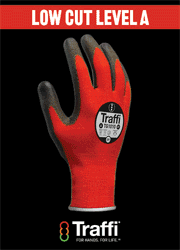Matthew Bishop, Operations Manager at Viking Extrusions, explains how fire-grade silicone is helping to increase fire safety.
Not many people know of, or think about, extrusions. They are the small cross-sections that act as seals and bridges in many machines and moving parts, helping to keep them functional. Yet they literally hold our modern technological society together.
This is also true to an extent upon how much we rely on fire safety. Extrusions come in many shapes and sizes depending on their purpose, but they also come in an array of materials. The type of material and the grade used can greatly influence how well-protected a particular environment is from containing or preventing a fire.
One of the better materials for fire prevention and control is silicone. This man-made rubber component is not only water-repellent and electrically insulating, it is also — out of almost all of the materials available from which to make rubber extrusions — extremely resistant to very high temperatures.
A tale of two silicone extrusions
Silicone is naturally more heat-resistant than most other elastomers (rubbers) and polymers (plastics). But there are grades that have an even greater amount of heat-resistance, known as heat-resistant grade silicone. Although it is always beneficial to have a material tolerance for greater temperatures, when talking about fire safety the best type of extrusion is flame-retardant grade silicone. There is sometimes confusion between the two.
Flame-retardant grade silicone cannot withstand temperatures quite as high as the heat-resistant grade (it tends to max out around 200°C). But while a heat-resistant extrusion might be handy in an over door or some other means, what makes flame-retardant silicone so useful is that it is specially formulated to be self-extinguishing, and to have a prolonged protection against burning.
Flame-retardant silicone grades and industry functions
As a means of preventing, controlling, and making machinery less vulnerable to fires, flame-retardant silicone extrusions are very common across many industries. The specific standards of the silicone grades used however, varies from industry to industry.
They all have fairly unromantic names, but the most highly sought-upon standards of flame-retardant silicone include ‘UL-94’, ‘EN45545-2’, ‘FAR/JAR 25.823’. Common in the lighting, railway (and mass transit), and aerospace industries respectively, these variants all have another very important quality in addition to being self-extinguishing and having a minimum burn distance. They all have a low smoke, low toxicity quality.
This low smoke, low toxicity is very important. As anyone who is old enough to remember knows, one of the great tragedies of the Kings Cross Station fire in 1987 was that the burning rubber and other materials generated a lot of excess smoke and chemicals — which all helped contribute to the fatality rate there. Indeed, materials of low smoke and toxicity are legal requirements, and have been ever since the incident, but fire-retardant silicone is considerably less so than even the alternative materials out there.
The future of fire prevention
For the purpose of rubber extrusions, silicone might be one of the best materials available. But no environment can be too safe, and things can always be improved.
That’s why silicone as a material is constantly being revised and improved upon in the laboratory setting, to improve its function and performance. The priorities are: what else can be done to further increase the minimum burn distance and limit the spread of flames? And how else can both the smoke and toxicity levels be lowered in the event of a widespread fire?
More work on the safety front can always — and should be — done. But for now, it’s the best we’ve got.






























